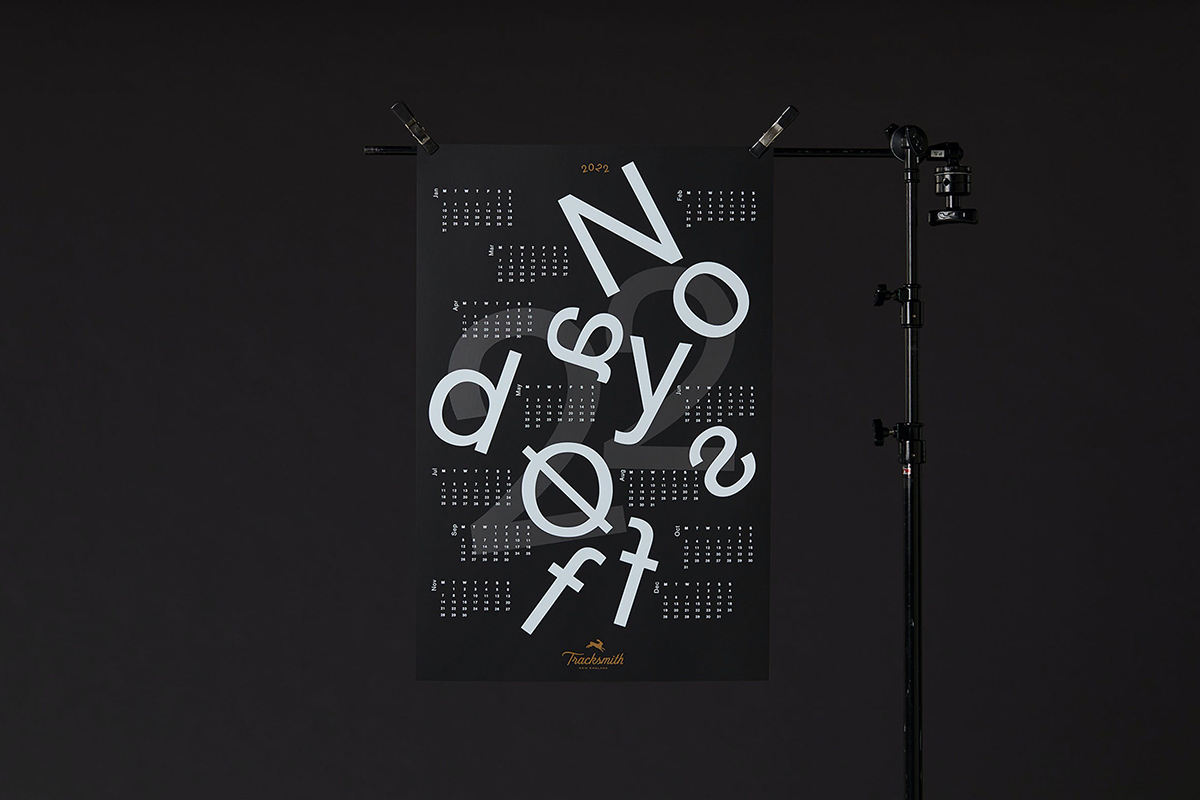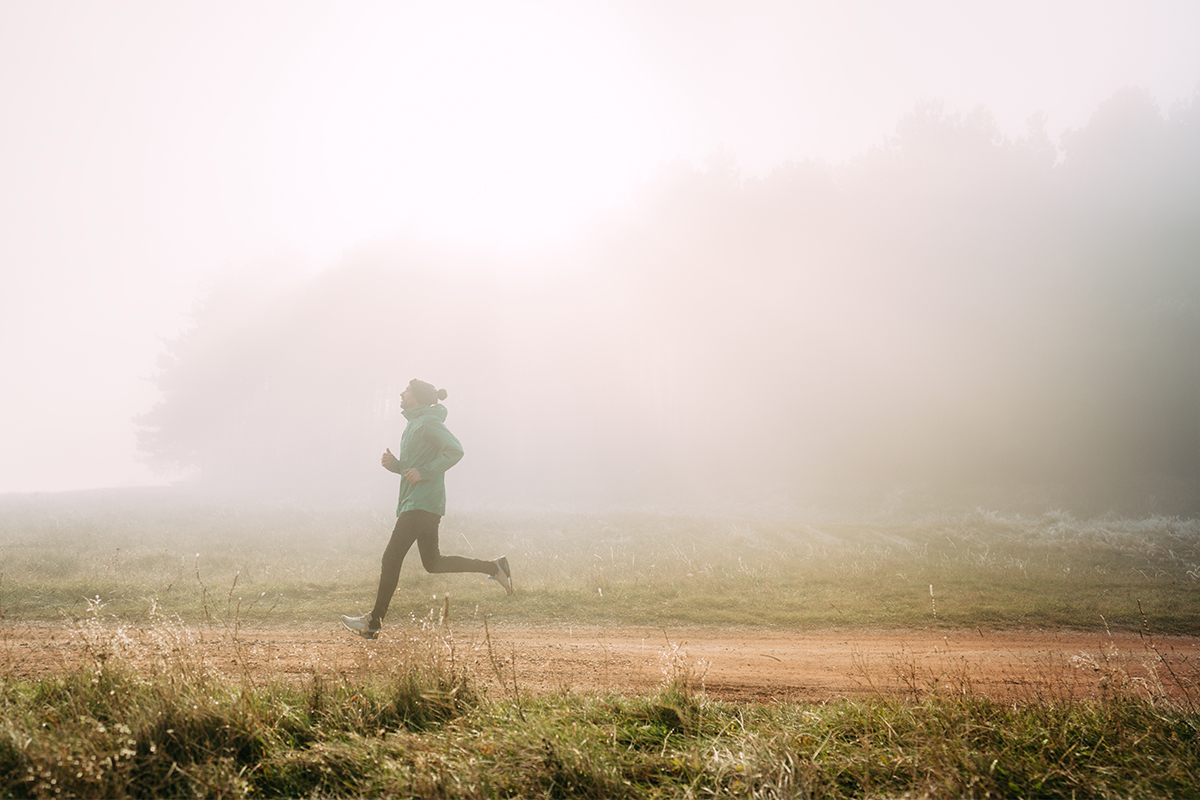Jon Sutherland lives in Los Angeles. Alex Galbraith is an attorney. Simon Laporte sells agricultural equipment in Quebec. All are over the age of 70, and all have run at least one mile every single day for the last 45 years.
These men started their streaks not long after the moon landing. Their origin stories are now mythic; according to a Runner’s World profile published in 2019, Sutherland ran his first miles after quitting his college baseball team. He was sick of pitching and eager for something new. One day, after throwing a no-hitter, he officially called it. His dad retrieved the ball and signed it for his son: “To Jon, now free to run.”
“Coach Jon,” as friends and fans call him, has run over 200,000 miles since the age of 18 — at one point averaging 10 miles a day — and now owns the planet’s longest-recorded running streak, at 19,219 days. He set the mark last year, after passing the late British runner, Ron Hill, on Independence Day. Go figure.
All of this knowledge is in the public domain thanks to Streak Runners International and the United States Running Streak Association, a project that’s been around for nearly 30 years and tracks the everyday efforts of the world’s preeminent “streakers” — a community of men and women who run at least one mile within each calendar day. In order to qualify for their ranks, a prospective streaker must first run every day for 365 straight days. Diligent record-keeping (easier than ever today, thanks to Strava and other tracking apps) is a given. From there, you’re one of the 3,739 on the active run-streak spreadsheet. The only way to climb that ladder is to wait for others to stop running. Or die.
The coverage surrounding these feats is invariably positive, particularly whenever a streaker eclipses a record, celebrates an anniversary or reports powering through an injury. (Sutherland has run through flus, broken bones and shingles. He even got out for a jog the day doctors performed surgery on his artery.) The comments section after a streaker profile may very well be the most positive corner of the internet: “Amazing commitment,” “This brought tears to my eyes,” “Lacing up to run right now!”
And truly, thank goodness for the infectious, inspirational energy that people like Sutherland and Hella Sibide, a retired MLS player-turned-streaker (currently sitting on 1,698 straight days), bring to the world. Sibide became the first Black person to run across the entirety of the United States in 2021; he runs for “those who can’t,” donating funds and time to various causes, from suicide awareness, to terminally-ill patients, to Soles4Souls, a non-profit that donates shoes to people who desperately need them.
At the same time, streaking has become a dynamite branding opportunity for running labels and publications: Runner’s World has carried a T-shirt that reads “I’m a streaker” for years, while Tracksmith launches a brand-new “No Days Off Collection” in the first week of each new year, which includes a calendar and all the warm gear you’ll need to actually keep a run streak going through the worst of winter. In the last two weeks, I’ve received emails from two other running brands urging me to get out there, “whatever the weather,” and get some momentum going on my 2022 mileage.
There are far more sinister trends in the realm of health and wellness than a number of motivated creative directors looking for ways to get you outside during the darkest, shortest period of the year. But if something seems slightly off to you about a run streak, it’s okay to trust that instinct. Running has always showcased a fascinating collision of the anecdotal and the universal; while some training philosophies (like a run streak) seem to work for certain runners, there are physical and logistical concerns that affect every runner.
For instance: sore ligaments, snowstorms, the sun setting before 5:00 p.m. on a busy workday. And how about travel? I love running. I led off 2022 with a 12-miler. But I’m happy I didn’t have to squeeze in a week of runs when I traveled to Spain last August. (Not least because El Retiro Park hit 107°F one afternoon.) I was delighted to just be on vacation, sleeping in late and drinking sangria.
One mile a day isn’t much of an assignment; even for amateur runners, that’s about the length of a warmup before a track workout. But what happens when that mile is compelled? Does running become a chore? What sort of mental gymnastics must you entertain when you’re nursing a bum knee, in order to get outside and run on it just to keep the streak going? And on the flip side, how might such an incessant grind impact those days where you definitely should be running, and ideally, running hard and getting faster? Will you have the energy or desire to show up and shell out for a tempo run, after you’ve been running nonstop for three weeks (let alone three years)?
Colleen Quigley, a middle-distance runner who competed at the 2016 Olympics, won gold at the 2019 USATF Indoor Championships (finishing the mile in 4:29) and now runs with Lululemon, says she has “mixed feelings” about run streaks. “The tricky thing with a run streak is that running is an awesome activity that is great for the body and mind … except for that pesky overuse issue. It’s a repetitive motion, it’s weight-bearing and it’s fairly high-impact, so it requires proper recovery between runs to let your muscles and tissues repair.”
There’s a phrase making the rounds these days, most commonly from personal trainers: Listen to your body. It sounds like platitudinal jargon, but it’s actually a genuine prescription for holistic wellness and sustainable progress — no matter your level, no matter the activity you’d like to get better in. This past summer, Quigley listened to her body and made the difficult decision to pull out of the Olympic Trials. In a heartfelt video posted to Instagram, she revealed that she had been dealing with various injuries for months, which had taken a turn for the worse. Quigley vowed to play the long game. “I’m gonna give myself the rest I need — both mentally and physically,” she wrote.

The mental aspect is key. For competitive runners, there’s long been a sense that the only way forward is linear. You run to best your PR from the year before, every year, until one day you’re done. But that’s not how life works. Mental recovery is just as critical as physical recovery. In her post, Quigley explained that the pressure she felt to perform at the Olympic Trials didn’t come from her coach, sponsors or family. “They all want me to enjoy my career and my work,” she said. “This pressure comes from me … It made it feel like the more I wanted it and the harder I tried, the harder it was to achieve.”
Half a year later, Quigley is back in the lab, eager to come back better than ever. She posted a video update the other day, explaining how “cross-training at altitude” — Peloton sessions at her home in Flagstaff, Arizona — will be instrumental to that process.
For those intent on starting some sort of streak this year, Quigley recommends an “every-other-day” run streak. “Try non-impact activities on the off-day like spinning, yoga, swimming,” she says. “And learn to tell the difference between ‘good’ pain and ‘bad’ pain. Good pain is that burn of the lungs, the soreness in your quads, even heaviness in the legs. Those feelings of discomfort are signs your working hard and your body is getting stronger! Bad pain is often sharp, gets worse from day to day, or requires you to alter your gait to compensate.”
Nick Joannidis, a USATF-certified running coach who’s qualified for the Boston Marathon four times, is familiar with “bad pain.” The one time he attempted a run streak, he lasted 183 days. By the end, he says, “I was in constant pain, sore from all the nonstop running. I can’t think of any advantages of a running streak other than getting onto the Streak Runners International website with the other streakers. ” Joannidis has a friend who started in 1990 and hasn’t stopped. “He’s now in his late sixties. His running is basically a fast walk, and he looks labored with every step. He hasn’t rested in over 30 years!”
Like Quigley, Joannidis favors the long game. In his case, it’s a longevity game. “My goal as a coach is for runners to be running as long as they can in their lives, hopefully into their eighties. Every schedule I create as a coach involves some rest. Every week, there’s a day off. Every four weeks or so, there’s a low-mileage week. Every few months there’s a week off. The more one runs with little rest, the more likely injuries will happen. With injuries comes an end to the streak and to all running entirely … Put simply, I am against run streaks.”
That said — for some runners, there’s relief (and even solace), in the reliability of a daily run. It’s an excuse to take a break from work or familial stress, a reminder to get outside, an opportunity to catalyze blood flow and brain function, and an excuse to prioritize you, if even for 15 minutes of an otherwise ordinary day. A run streak is a guarantee. The appeal makes complete sense. It’s extremely understandable, too, that the trend would find practitioners at the height of a pandemic, or at the beginning of a new year, times at which we crave reset buttons and rituals that we can control.
But we can’t allow our most favorite things to become self-defeating. At that point, what do we have left? Running is fertile ground for over-the-top human-interest stories — the sport no longer just wants to become faster; it would rather race longer, hotter, wilder. And that’s fine. Of course there’s a runner in Wisconsin who ran a marathon every single day for 423 days. The running community (and, tellingly) its peripheral communities will always rally to follow a story like that. The best thing you can do is pick and choose the aspects of the sport that best fit your goals, be they qualifying for the Olympics or finishing a Memorial Day 5K.
Consider this perspective from Nick Willis, the five-time Olympian distance runner from New Zealand, who now works as an Athlete Experience Manager for Tracksmith. Willis tells InsideHook: “The ‘No Days Off’ mentality is more about embracing consistency. Rather than thinking about it as, ‘I need to run every day,’ it’s about ‘What’s one thing I can do every day that will make me a better runner?’ Sometimes that’s going to be a workout, sometimes that’s going to be some yoga or maybe just hydrating better. It’s a daily mindset that ladders up to bigger benefits.”
Willis acknowledges that Tracksmith’s No Days Off campaign came from “the undeniable fact that running through winter is tough.” But that doesn’t mean you need to bundle up like Yukon Cornelius and fight the Abominable Snowmonster just to earn your Strava stripes for the afternoon. You can find another way to be a runner for the day, whether it involves running or not. And while Tracksmith promotes No Days Off in January (as the collection involves a limited-edition calendar), the mentality is meant to carry you through the year. Through soreness, through shifting sunset hours, through sangria.
If anyone knows how to channel consistency into a running routine, it’s Willis. The Kiwi has broken the four-minute-mile barrier 19 years in a row (he’s now 38) and attempted it again this past New Year’s Eve, at the New Balance Track and Field Center in New York. A documentary detailing his latest result will release later this month. To Willis, it’s simple: “A good training plan will include rest days and flexibility for illness or injury. So on those days, it is not a deviation from the plan to not run, in fact, it’s the wise response.”
I came back to running in my own time during the pandemic, after nearly a decade away from the sport. It was the first time I’d ever been in control of my own mileage, and I marveled at how tinkering with the input (track workout here, rest day there, Peloton HIIT here) directly impacted my results. Long-distance champion Kyle Merber summed this concept up with a tweet this week: “Most runners can trainer [sic] harder but need to stop overtraining. Thanks for coming to my confusing TED Talk.”
Confusing, maybe, but wise just the same. Instead of overtraining every day, give yourself one or two days a week to really train. Create windows to make an impact. I genuinely look forward to my days away from running. I use them to cycle, or play soccer, or box. Getting to come back to is the real treat. I’m ready to charge hills, play with pacing, maybe tack on an extra mile if my lower half’s really feeling fresh. As you plan your running calendar this year, take it easy on the legs and take it easy on yourself. Remember what brought you to running in the first place. Allow yourself the opportunity to discover it again. And again. And again.
The Charge will help you move better, think clearer and stay in the game longer. Subscribe to our wellness newsletter today.






















